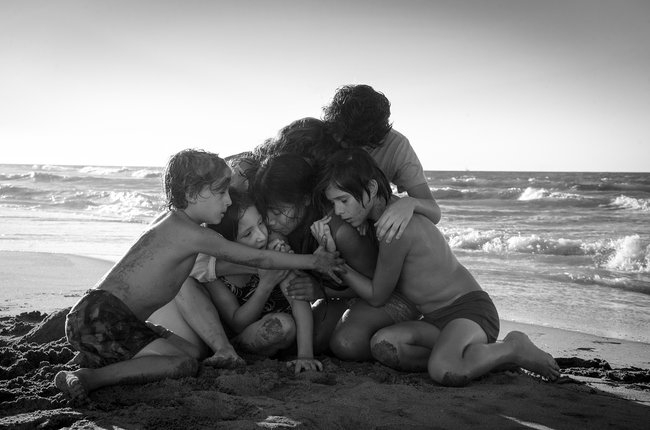Mexican director Alfonso Cuarón’s film Roma is nominated for ten Academy Awards, including best picture, best director, best foreign-language film, original screenplay and best lead actress (newcomer Yalitza Aparicio) as well as sound editing and sound mixing.
The movie -- Cuarón’s reconstruction of the early-1970s Mexico City of his youth -- also nabbed best foreign-language film at the Jan. 6 Golden Globe Awards, and he won best director. If Roma wins best picture at the Oscars, it will be the first time that a foreign-language film (Roma is in Spanish with some dialogue in the native Mexican Mixtec language) takes home the top Academy honor.
Music plays an exceptional role in the Netflix-produced and streamed movie, as music supervisor Lynn Fainchtein recently told Billboard. “All of the music is embedded in the story,” she said. "It’s part of each scene."
“There is nothing by accident,” she added. “Nothing that doesn’t have meaning. In Mexico, our memories are always linked to songs.”
In addition to relying on her and Cuarón’s memories, Fainchtein did extensive research on what songs received radio airplay in 1970 and 1971. Music in Roma most often comes from the ever-present radio, an all-access medium of symbolic importance in a film that highlights class inequality.
“Music reveals a lot about a society,” Cuarón also told Billboard. “In Roma, the music shows a Mexico with pretensions of modernity, but still clinging to its past.”
Below, we break down ten songs from Roma’s soundtrack with Fainchtein's help.
Leo Dan, “Te He Prometido”
“Leo Dan is a famous pop singer from those days,” says Fainchtein, who describes the Argentine artist as a Latin Tom Jones of the era.
Javier Batiz, “La Casa del Sol Nasciente”
Mexican rock-and-roll pioneer Javier Batiz performs this ripping Spanish version of “House of the Rising Sun.”
Rocío Dúrcal, “Más Bonita Que Ninguna”
“This is playing when Cleo [the domestic worker played by best actress nominee Yalitza Aparicio] is in the kitchen,” says Fainchtein.”The kitchen in Mexico is always nice place because the nanny is there, the 'Cleos' that we all had. There was good food, it was always warm, it was always where the radio played all the time, and somebody who was with the kids all day was there.”
Juan Gabriel, “No Tengo Dinero”
The Roma soundtrack includes this early romantic hit from Mexican pop idol Juan Gabriel.
Yvonne Elliman, “I Don’t Know How to Love Him”
“[The album] Jesus Christ Superstar came out in 1970, and it was really important, huge in the whole world,” says Fainchtein. “My feeling is that then it was a certain class that would be listening to it [in Mexico], but then it became bigger. Afterwards, there was the play, and it was a movie. There was a Mexican version, so Jesus Christ Superstar really had a huge success in Mexico. We had the Yvonne Elliman song “I Don’t Know How to Love Him,” [which plays in a party scene in the film] and at some point for the scene, Alfonso asked for the cover, after the song was already chosen for that scene. You see the Mexican cover of the album, not the U.S. one [in the film]. It had a huge success in Mexico.”
La Revolución de Emiliano Zapata, “Ciudad Perdida”
This song by Mexican rock band from the Seventies, La Revolución de Emiliano Zapata, sets the scene for growing social tensions in the film.
Perez Prado, “Corazón de Melon”
Perez Prado sets a party scene with the Cuban teasing dance tune “Corazón de Melón.” The mambo king joined Rosemary Clooney for an English version of the song in 1959, titled “Watermelon Heart.”
Acapulco Tropical, “Mar y Espuma”
“The music is called tropical, but it’s not salsa,” explains Fainchtein. “It doesn’t have anything to do with that. It’s the style of music played in the ’70s [in Mexico]. The genre is called tropical, it was between tropical and bolero. Bands like Pasteles Verdes, Los Babys, and Acapulco Tropical.”
The Ray Conniff Singers, “Those Were the Days”
Crooner Ray Conniff -- who recorded a Spanish-language album in 1968 -- performs this 1969 version of “Those Were the Days.” Previously, Mary Hopkins’ 1968 recording of the song was a No. 2 hit on the Billboard Hot 100 chart.
El Bert Moguel Y Los Strwck, “La Suegra”
The Mexican band known as Los Strwck made a string of mother-in-law jokes into a bawdy cumbia song for the title song the group’s 1970 album.








